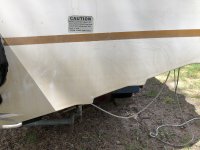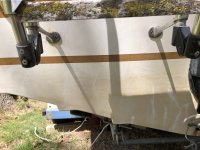The outside of my transom has hairline cracks in it. Is this just the gelcoat cracking? Or do I have more severe problems? I can get a picture tomorrow, if that would tell you more.
If you're replacing the transom it isn't likely to be a problem. It could either be the gel coat cracking or the glass has cracked because of the rotting transom core. At worst, cracks in a transom can be a sign that the transom needs to be replaced so you have something of a self correcting problem.
A picture will definitely help.





















